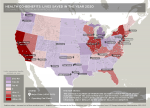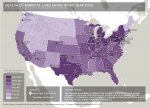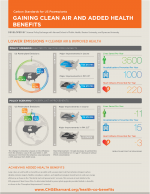A team of scientists from Harvard, Syracuse, and Boston Universities has released a new first-of-its kind study that maps the health impacts of three different approaches to power plant carbon standards and shows dramatically different results. The study was coordinated by the Science Policy Exchange–a collaborative that includes four LTER sites. Members of the team include Dr. Charles Driscoll and Kathy Fallon Lambert who are researchers from the Hubbard Brook and Harvard Forest LTER sites, respectively.
There are important parts to this story that have not been told.
The top-performing option, which is most similar to the current Environmental Protection Agency (EPA) Clean Power Plan, results in 3,500 lives saved every year from premature death from air pollution.
But what is new and surprising here are the results of the comparison we did for three different policy approaches to a carbon standard:
1. It is surprising that the less stringent power plant approach favored by some groups essentially has NO health benefits, and perhaps a slight public health impact.
2. It is surprising that the most stringent approach does NOT have the highest health benefits. This suggests that a market-based approach alone is not enough.
3. Further, the results suggest that it is possible to gain even more than 3,500 premature deaths avoided -- but getting there will require stringent carbon targets within a policy framework that promotes cleaner fuels and more energy efficiency. This is why the EPA-proposed Clean Power Plan results in the highest health benefits.
4. Finally, the results underscore how important it is to look at multiple pollutants emitted from power plants and at several different policy options in order to understand the true costs and benefits of new standards.
Follow this link to the press release and report, as well as additional maps and infographics.

 Enlarge this image
Enlarge this image

